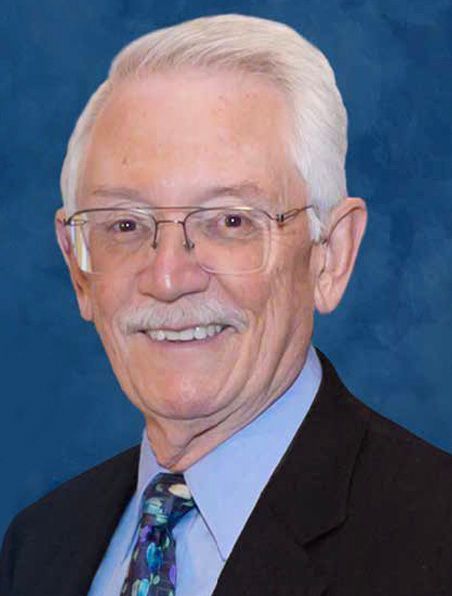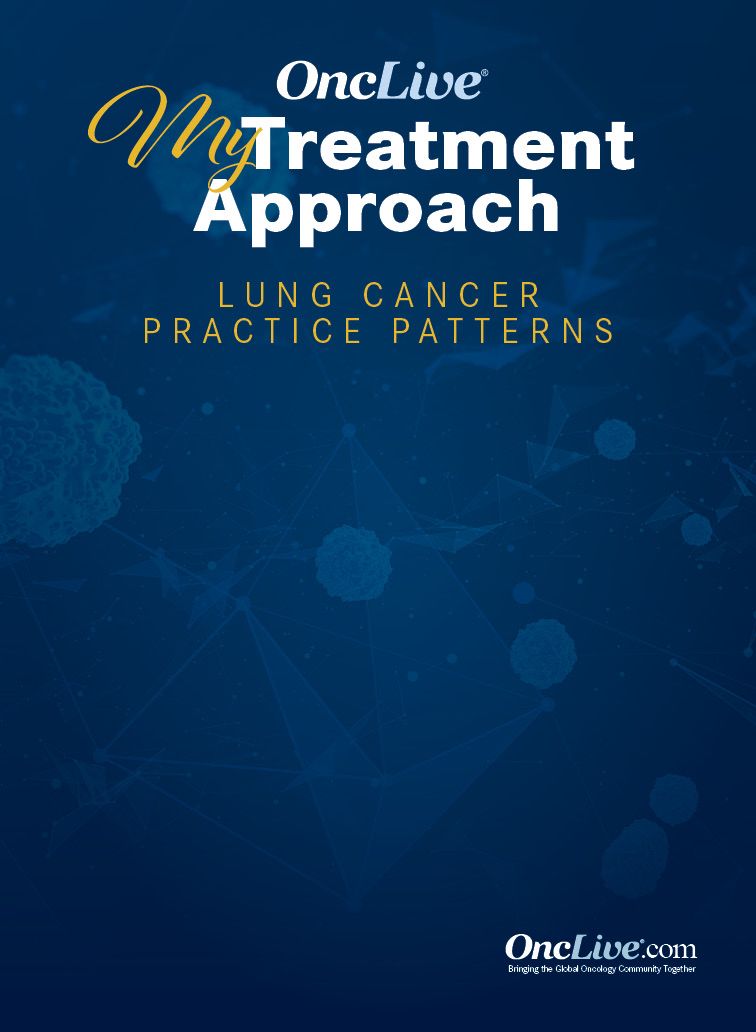Publication
Article
Supplements and Featured Publications
Molecular Testing Is Critical With New Targets, Novel Therapies, and Earlier Intervention in NSCLC
Author(s):
David R. Gandara, highlights key data regarding the earlier integration of targeted therapy in NSCLC, the growing role of molecular testing with tissue and liquid biopsy, and the importance of incorporating a multidisciplinary approach to patient care in the paradigm.
David R. Gandara, MD

With multiple available agents targeted toward specific molecular aberrations in metastatic non–small cell lung cancer (NSCLC), the role of molecular testing and personalized medicine is becoming increasingly apparent, said David R. Gandara, MD, who added that tailoring treatment to individual patients is beginning to expand to patients with non-driver mutated NSCLC, as well as for those with earlier-stage disease as targeted therapies begin to move to earlier lines of therapy.
“The message is that patients are individuals, so we are going to treat them as individuals,” said Gandara, director of the Thoracic Oncology Program, a professor, and senior advisor to the director at the University of California Davis Comprehensive Cancer Center. “Like everybody’s fingerprint is different, [every patient has] a molecular fingerprint that is unlike anyone else’s. We are going to use that information to help personalize therapy for them.”
In an interview with OncLive®, Gandara highlighted key data regarding the earlier integration of targeted therapy in NSCLC, the growing role of molecular testing with tissue and liquid biopsy, and the importance of incorporating a multidisciplinary approach to patient care in the paradigm.
OncLive®: What takeaways from the phase 3 FLAURA trial (NCT02296125) set the stage for other trials in NSCLC, such as the phase 3 ADAURA trial (NCT02511106)?
Gandara: The FLAURA trial, which compared first-line osimertinib [Tagrisso] with the [earlier-generation EGFR] TKIs gefitinib [Iressa] and erlotinib [Tarceva], remains the most important, precedent-setting trial in the oncogene-driven lung cancer [paradigm]. The trial was positive for progression-free survival and overall survival [OS], and showed that the third-generation agent, [osimertinib], was superior [to gefitinib and erlotinib]. [Osimertinib] was also superior in reducing brain metastases, which is a big problem for patients with EGFR-mutated lung cancer.
[FLAURA] also set a precedent in terms of being able to sort out the mechanisms of acquired resistance using circulating tumor DNA [ctDNA]. The trial showed that the acquired resistance pattern using first-line osimertinib is quite different from that in the second-line setting; there was essentially no T790M [mutations] when osimertinib was used in the first-line setting.
The trial set the stage for many other trials being done in other oncogene-driven cancers that are testing newer-generation drugs vs first-generation drugs. It also set the stage for moving drugs like osimertinib into earlier stages of lung cancer, which brings us to the ADAURA trial.
The ADAURA trial was a comparison of osimertinib with placebo in patients who had surgically resected, early-stage NSCLC, most of whom received chemotherapy before randomization. This was precedent-setting also because [ADAURA] was the first trial of a targeted therapy against an oncogenically driven cancer to show a major effect [in the adjuvant setting]. Earlier trials had shown some improvement in disease-free survival with first-generation agents like gefitinib or erlotinib. In the case [of the ADAURA trial], the magnitude of benefit was huge; the disease-free survival [DFS] hazard ratio was less than 0.2. Now, it is early for survival and the data are not mature. Right now, [the OS is] not statistically different, but as time goes on, it may well be.
Just like in advanced-stage disease, the other major benefit of giving adjuvant osimertinib in this trial was the major reduction in brain metastases. The worst fear for patients with EGFR-mutated lung cancer, and patients with cancer in general, is that they are going to have to get their brain irradiated or [develop] brain metastases. [Osimertinib provided] a huge benefit for patients.
We are also waiting for minimal residual disease data using ctDNA from this study. That will be very interesting to see who benefitted from osimertinib in the ADAURA trial.
What are some ways that molecular testing can be streamlined for patients with advanced-stage disease?
Molecular testing is here to stay at the initial diagnosis of advanced-stage NSCLC. This is, of course, most applicable for adenocarcinoma of the lung, which makes up most cases these days. However, even guidelines are now recognizing that some patients with squamous cell lung cancer have the same oncogene drivers [as in adenocarcinoma]. They have EGFR, HER2, ALK, and other mutations as well. Particularly younger, never-smoking patients with squamous cell lung cancer should be tested.
That being said: How do we test them? These days, it is with next-generation sequencing [NGS]. That is preferred in the guidelines from every organization, including our own at the International Association for the Study of Lung Cancer [IASLC]. The reason is because we are now testing for up to 8 oncogene drivers. We can’t practically do sequential testing using polymerase chain reaction plus fluorescence in situ hybridization because it is just not feasible. Plus, we are about to be at 10 [oncogene drivers] because we now have [approved therapies for patients with] EGFR exon 20 insertions and KRAS G12C mutations.
These won’t necessarily all be applicable at the time of diagnosis in a patient with advanced-stage disease, but it is still important to know prognostically. [That information] is important so that we avoid immunotherapy in some of these cases because [giving immunotherapy] may be detrimental to subsequent care. For example, [let’s say a] patient with EGFR- and ALK-mutated NSCLC was started on immunotherapy before the molecular testing results came back. Then we find that they have an oncogene driver. There is emerging evidence that the TKIs are less effective [following immunotherapy].
How do we get the testing done in a cost-efficient and time-efficient manner so that we get the results back in 7 to 10 days? The Foundation Medicine test is just one example in tissue. In about 3000 patients on our Lung-MAP studies, the median turnaround time was 9 days. Some of the other tests, such as liquid biopsy tests from Guardant, have a median turnaround time of 7 days for blood. We are heading in that direction.
Do we start with tissue or blood? Do we try to do them both? There is increasing evidence, and this is in our new guideline paper from IASLC about liquid biopsy that [states] that we can still use a sequential approach when tissue is available. We send it off, wait, and hopefully it comes back within a week or so. If [tissue] is not available, go to plasma first. If we find a positive test, we can act on it.
After the time of acquired resistance, plasma first is now becoming the standard of care. This will have to do with cost, but if we can bundle these [tests] together in the future, we will find out more information. In the future, I think we may well be doing both.
What can be done to mitigate the wait time of molecular test before initiating therapy?
It’s increasingly important that practicing oncologists wait for the molecular testing results before starting therapy, which would likely be immunotherapy with or without platinum-based chemotherapy. The reasons for that are that the effects of subsequent oncogene-driven therapy could be diminished.
What can we do to mitigate this? Well, the first thing is that a true emergency where we’d need to start treatment immediately [occurs] in less than 10% of all patients. For convenience, it is nice to [meet the patient] and start them on chemotherapy and immunotherapy [immediately], but that can harm patients. I found that when I explain to patients why we want to personalize therapy for them and why it is important to wait unless it is an emergency, they are all on board. They want personalized therapy. If I tell them that if they wait and we identify an EGFR mutation that they can take a pill, there is no question [that they’d rather do that].
Physicians accept when it is an emergency that they should try to wait until we have the requisite information. However, if it is an emergency, the message is, don’t start them on immunotherapy, start them on platinum-based chemotherapy by itself. We know [chemotherapy] is effective in rapidly progressing cancers, so wait until we get the results of molecular testing. If the molecular testing results are negative, then we add the immunotherapy.
How important is incorporating a multidisciplinary approach to patient care in NSCLC?
NSCLC has been a model for the need for multidisciplinary [care]. Most institutions, whether in the community or academic centers, have tumor boards that include molecular analysis and maybe even have a separate molecular tumor board to discuss cases in a multidisciplinary fashion. Now that we are moving some of our treatments to earlier stages of lung cancer, it is even more important that we engage everybody that is part of the team early on, [including] surgeons, pathologists, who are going to be doing our testing, sending it out, or preparing tissue, and pulmonologists, who are making the diagnosis and sometimes [requesting] another biopsy so that we have enough tissue for molecular testing. All of that is becoming increasingly important.
In some patients with early-stage NSCLC, we know that if they are not good surgical candidates for whatever reason, such as [those with] severe chronic obstructive pulmonary disease, they can benefit essentially equally from stereotactic radiation therapy. The whole [radiation] team needs to be engaged up front. When [the team is engaged], the literature suggests that patients do better, they receive better care, and they live longer.
What is your advice to practicing clinicians regarding how to approach personalized medicine in NSCLC?
Patients are increasingly aware of the literature about their specific cancer and situation. Now that we are in an electronic mode and the internet is there, patients pick up the good, as well as the bad. Sometimes they think a broad statement [made in] the literature applies to them. So, the first thing I do is say, “You are not all of those patients. You are a very specific patient and our approach to your treatment, whether it is curative or is to get disease control and increase survival, is going to be personalized.”
If the patient has an oncogene driver, [personalized medicine] is very easy to accomplish. However, that is increasingly important for all other patients getting immunotherapy and chemotherapy because we have about 15 different regimens that could be used. When do we pick one vs another? A lot of factors go into that [decision], including a host of factors for that patient and testing for PD-L1 and tumor mutational burden, which is an emerging biomarker.










